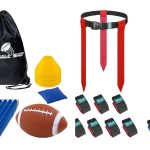The game of 7 on 7 flag football is a fast-paced and exciting variation of the traditional American football and NFL concepts you see on TV Sundays in the fall. It is played with seven players on each team, as opposed to the traditional 11 players.
As any coach knows, having a solid game plan is crucial in any sport. 7v7 flag football is no exception.
A well-thought-out strategy can mean the difference between victory and defeat. When developing an offensive playbook, it’s important to take into account the strengths and weaknesses of your team, as well as the strengths and weaknesses of your opponents.
This article will provide an overview of the best 7 on 7 flag football plays to add to your playbook. It will outline 15 plays that I have had success running with young players and have had in my flag football playbook for years.
Bear in mind, that you can also adapt these plays to 8v8, 6v6, or 5v5 games.
The article will also provide tips for success, including the importance of communication, rehearsal, adaptability, and focusing on your team’s strengths. By the end, you will have a strong understanding of these plays and how to execute them with success. I hope it also spurs some ideas in your head to create some of your plays.
Understanding the 7 on 7 game structure
Before devising a winning playbook, it’s important for flag football coaches to know a few things about the 7 on 7 game structure.
Field dimensions: The field of play is typically smaller than a traditional American football field. Generally speaking, it measures 40-50 yards in length and 20-30 yards in width.
Player positions: In 7 on 7 flag football, the different positions are similar to those in traditional American football, with the exception of the lack of an offensive or defensive line. Most 7 on 7 offenses consist of a center, quarterback, running back, and four wide receivers. Some leagues may require two additional offensive linemen. The defense consists of one or two pass rushers, a linebacker, two cornerbacks, and two safeties.
Key strategies and tactics: Many coaches utilize quick passing plays to take advantage of open spaces in the defense and avoid the pass rush while using motion to create mismatches and confusion. Effective communication and teamwork are essential for success in 7 on 7 flag football, as players must be able to react quickly to changing situations on the field.
Best flag football 7 on 7 plays
Before sharing the plays, there are a few things to note. Each player in the playbook is shown with a different colored circle. You can also number the circles. This makes it easier for younger players to understand, as they are given a color or number to follow.
The alignment for these plays includes one lineman, the center. Some 7 on 7 leagues require three linemen. Adapt as needed.
Speaking of adapting, these plays can easily be modified to be effective against man coverage and zone coverage for games of 5 on 5, 6 on 6, 8 on 8, and 9 on 9.
If you haven’t already make sure to check our 9 flag football trick plays, as well!
Finally, you can implement motion in the backfield per your flag football league rules to throw the defense off and get more favorable matchups.
Crossers
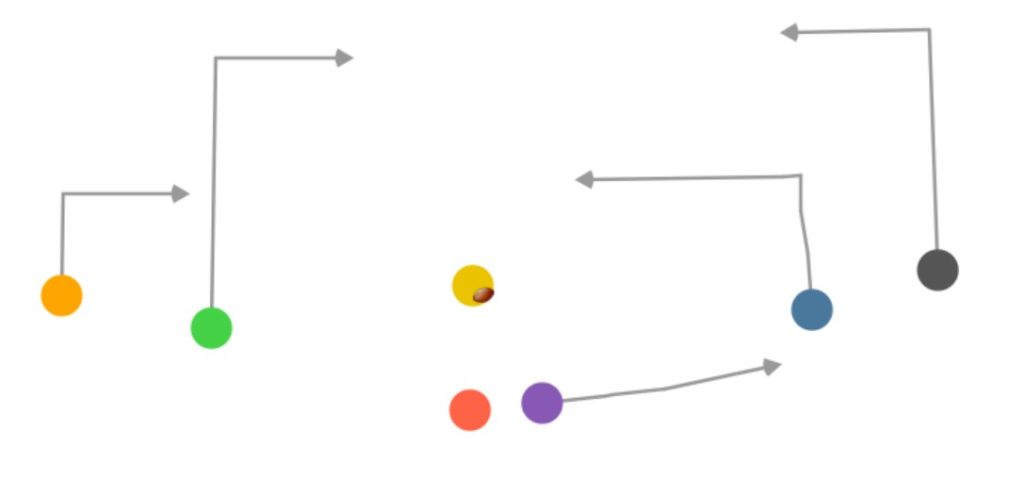
Set up: This is a basic football play with all receivers crossing in front of the quarterback and the running back running to the flat for a safety valve. Two receivers line up on each side of the field with a back to the left or right of the QB. The wideouts can run a traditional crossing route or a quicker slant.
Execution: The primary read for the quarterback depends on the yardage needed and defensive alignment. Whatever WR option comes open first, the QB should deliver.
Dig Right
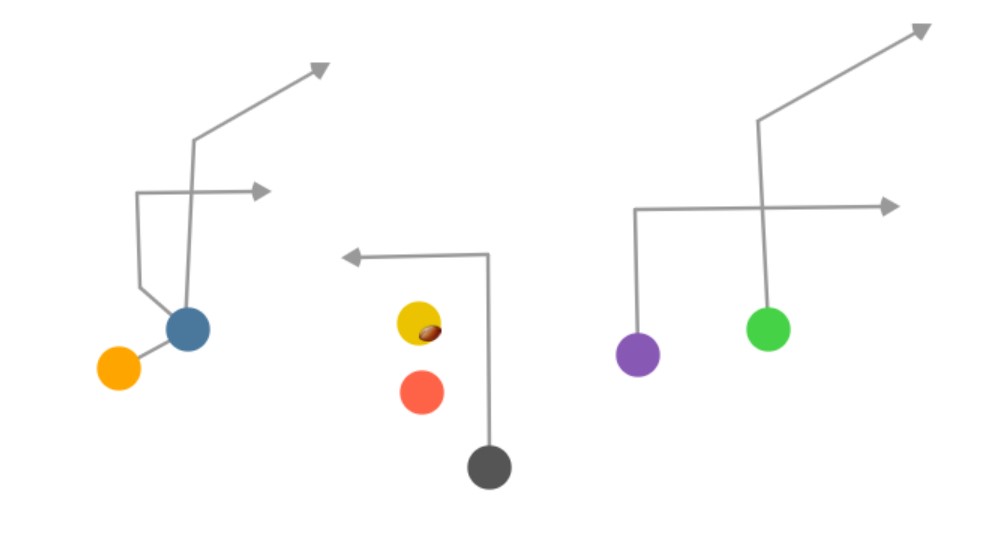
Set up: Two receivers line up on each side of the formation with the back behind or next to the QB. The QB can play action to the back, or execute a regular dropback.
Execution: The goal of this play is a big gainer to the right on the flag route run by green or the post route run by blue. The back and two other receivers act as safety valves if the big play isn’t there. This can also be run as Dig Left.
Halfback Slip
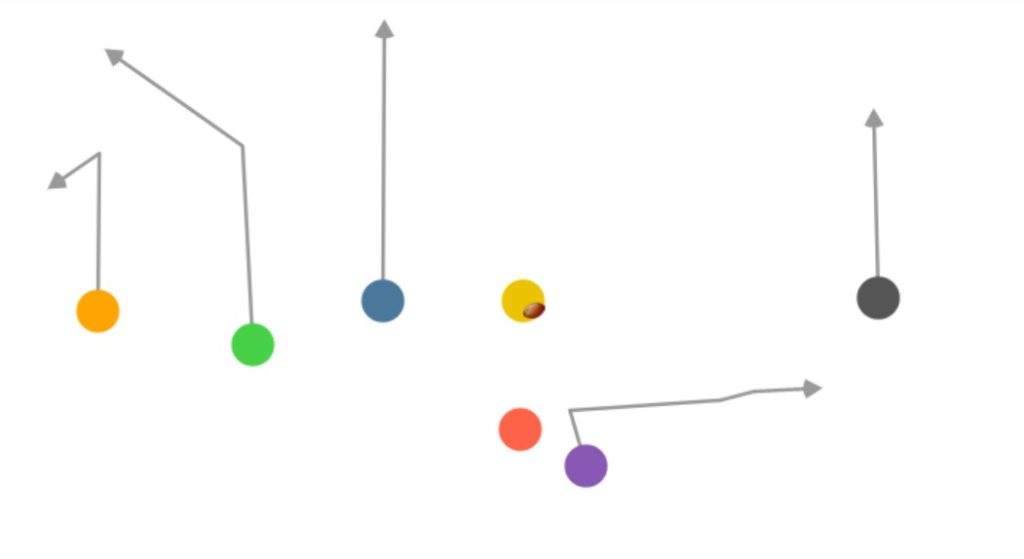
Set up: Three receivers line up to the left of the formation and another on the right. The back lines up next to the QB. The QB can fake a quick handoff to the back or execute a regular dropback.
Execution: The goal of this play is to secretly slip the back to the flat for a big catch-and-run play. The QB fakes a quick handoff and then fakes a deep pass to either the green or blue receiver. While that is happening, the back slowly slips out to the flat to receive the pass.
Inside Handoff

Set up: Three receivers line up to the left of the formation and another on the right. The back lines up next to the QB on the left.
Execution: Once you’ve hit the defense for a handful of big passing plays, they should be backpedaling more on the snap of the ball. This opens up the opportunity to have success with a running play up the middle and away from the rush.
Verticals
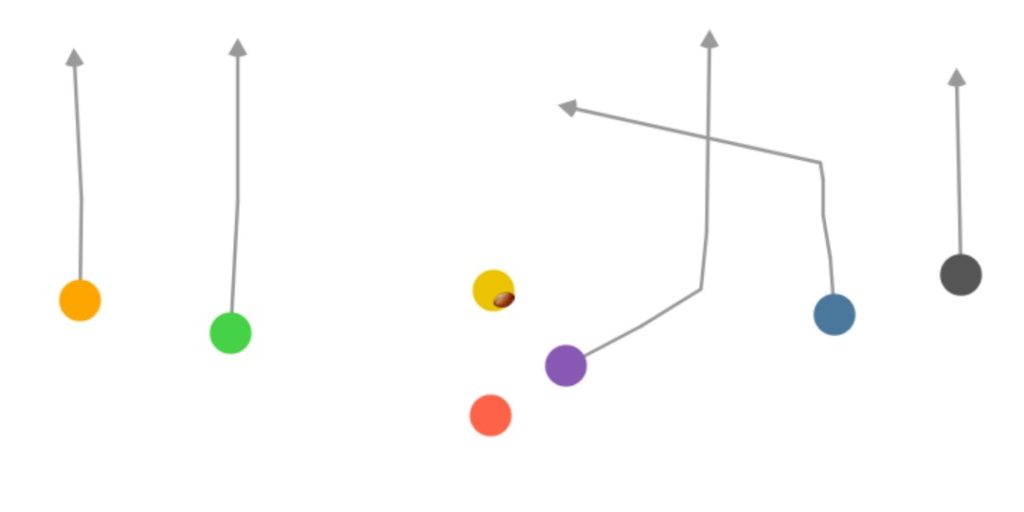
Set up: Two receivers line up on each side of the formation with the back behind closer to the line of scrimmage on either side of the QB.
Execution: Verticals is a great way to get a big gainer. The primary targets are orange and black as inside receivers. However, you may find a mismatch with your back running go route against a slower linebacker or safety. The crosser run by blue may also come open if the defense backs off enough.
Read Option
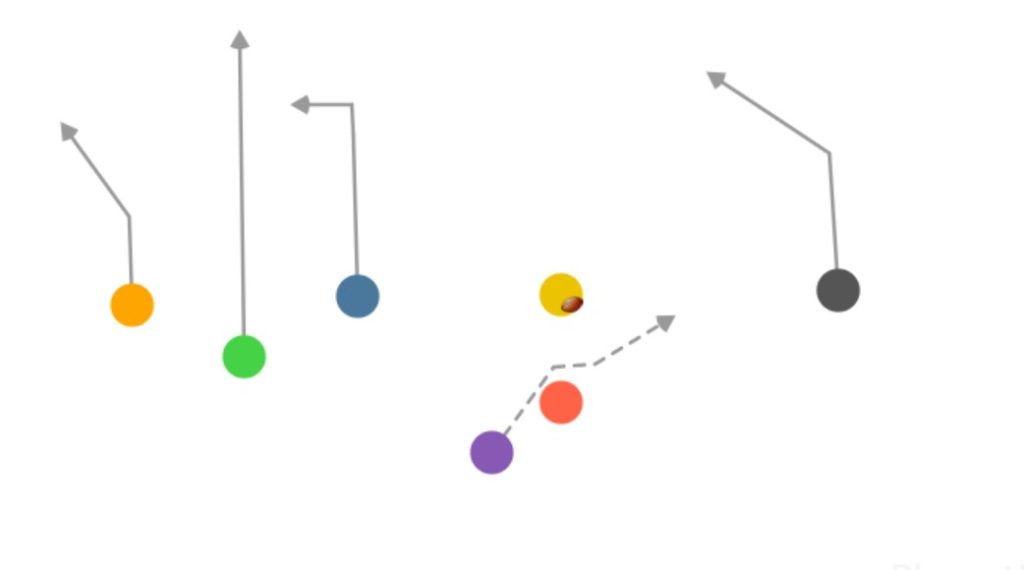
Set up: Three receivers line up to the left of the formation and another on the right. The back lines up next to the QB on the left.
Execution: This is like a read option play you see college and NFL teams run. The QB can give to the back or pull out to pass depending on the movement of the defense. Running a slant post, black is the primary target for a quick pass.
Pitch Right
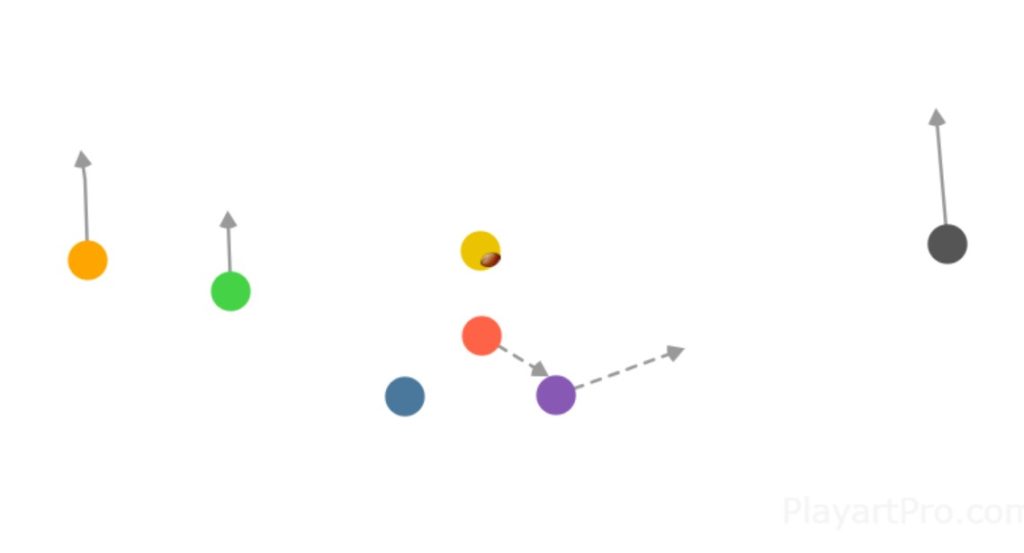
Set up: Two receivers line up to the left of the formation and another on the right. Two backs line up next to the QB on both sides.
Execution: Break out this play when you have a speedy back you want to get the ball to in space. The QB quickly pitches to the back on the move who attempts to get outside for running room. You could also do Pitch Left. Additionally, to trick the defense, the running back could throw a pass to black after accepting the pitch.
Roll Right

Set up: Two receivers line up on each side of the formation with the back behind closer to the line of scrimmage to the right of the QB.
Execution: This play works best when you need a catch or short yardage to gain a first down. The QB rolls to his right after taking the snap and looks to blue right away on a quick out route, unless black has gotten behind his defender. The back and green are safety valves if the primary options are covered up. You can also roll left.
Double Flags

Set up: Three receivers line up to the right of the formation with two on the left. The QB is alone in the backfield.
Execution: The goal of this passing play is to hit a big gainer to green or blue running to the pylons on a corner route. All other options in the route are safety targets.
Run Counter
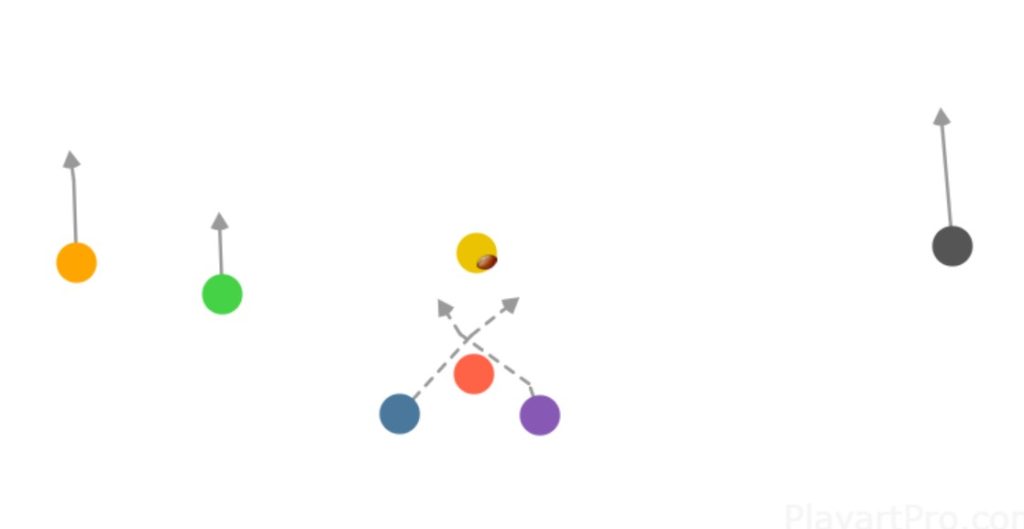
Set up: Two receivers line up on the left side formation and one on the right. Two running backs line up two yards behind the QB on both sides.
Execution: You can fake out the defense with this misdirection play for a big gain. The QB fakes a handoff to blue, turns his back to the line of scrimmage, spins, and gives to purple.
Flood Left
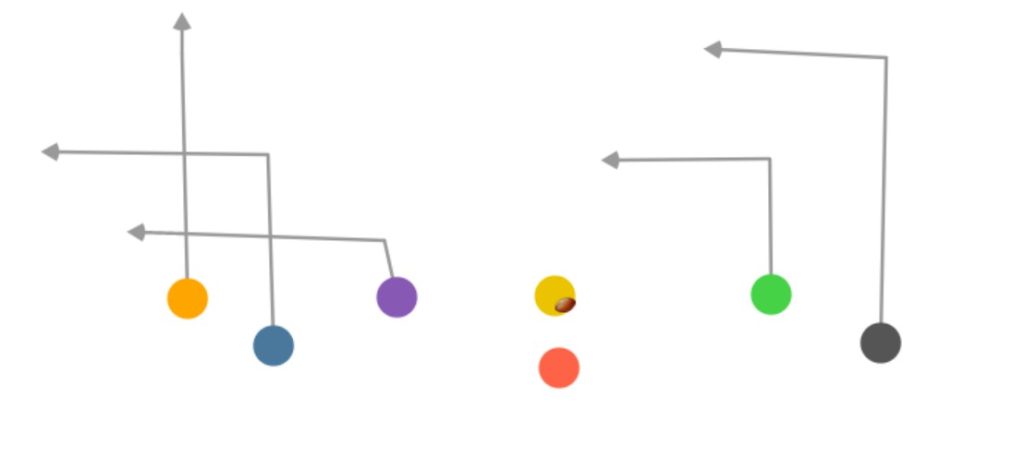
Set up: Three receivers line up to the left of the formation with two on the right. The QB is alone in the backfield.
Execution: This play is similar to Dig Right and Roll Right in that you want to flood one side of the formation. The primary receivers are blue and purple unless orange gets open deep. The can also be run as Flood Right.
Play Action Post Shot
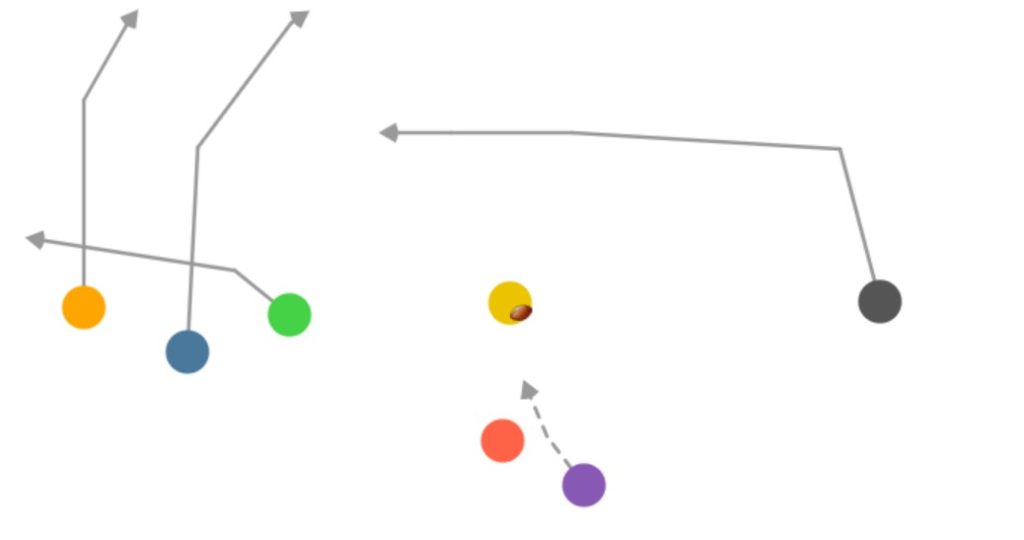
Set up: Three receivers line up to the left of the formation and another on the right. The back lines up next to the QB on the right.
Execution: Once you’ve hit the defense with a couple of nice run gains, they might be creeping up to the line of scrimmage at the snap of the ball. After faking the handoff, this opens up the chance to have success with a deep shot to orange or blue running to the field goalposts.
Play Action Boot
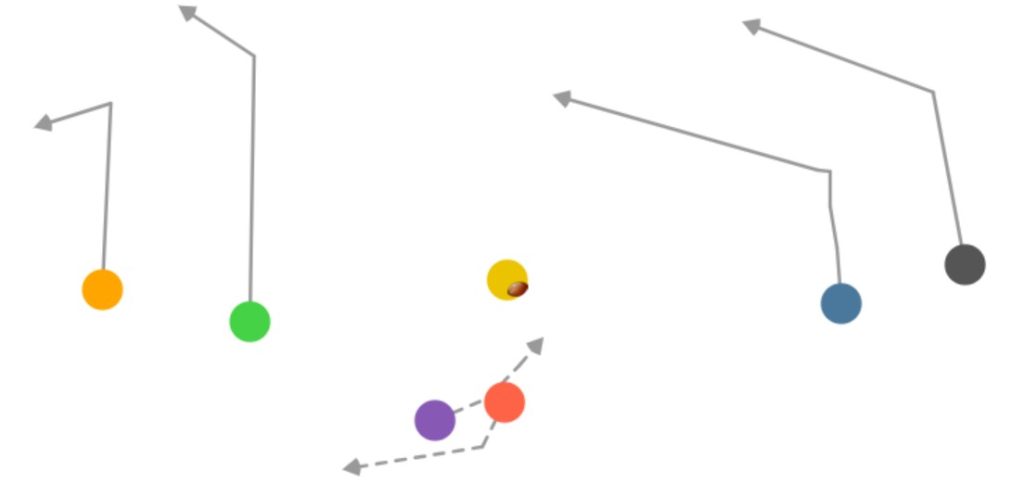
Set up: Two receivers line up on each side of the formation with the back set up to the left of the QB.
Execution: The quarterback fakes the inside handoff to the back and bootlegs out to one side for a play-action pass. Both receivers on that side, orange and green, are running out routes and serve as the primary pass options.
Smash
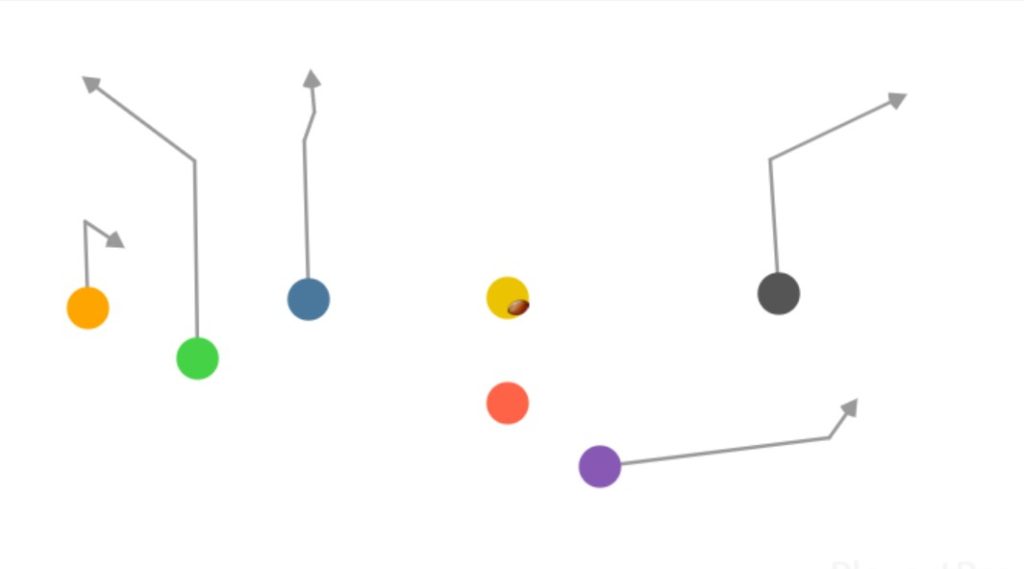
Set up: Three receivers line up to the left of the formation and another on the right. The back lines up two or three yards behind the QB on the right.
Execution: The QB can throw a swing pass to the back or to black on an out pattern to the sideline. He could also fake to those receivers and come back to blue running down the middle of the field for a sizable gain.
Jet Right
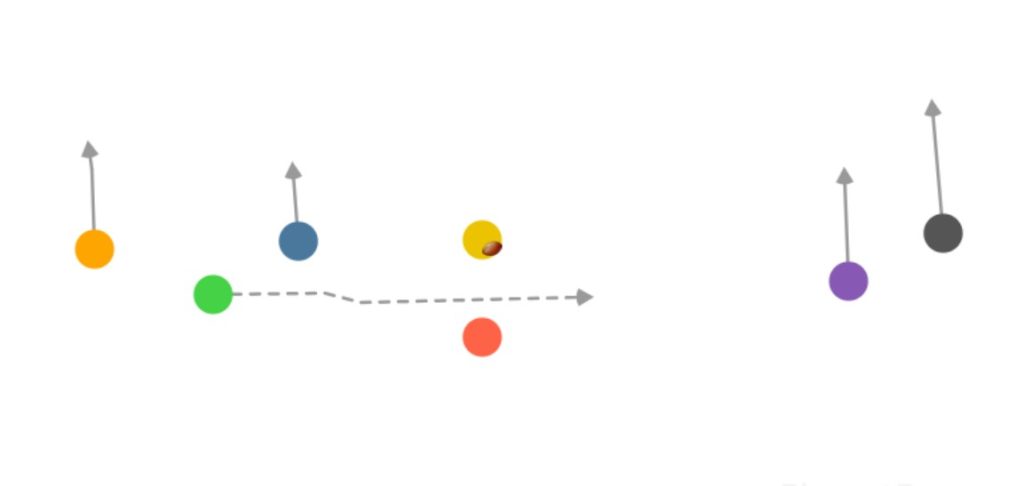
Set up: Three receivers line up to the left of the formation and two to the right. The QB is alone in the backfield
Execution: The goal of this play is to get the ball into the hands of slot receivers with serious wheels. After taking the snap the QB can fake a pass and then can throw a quick shovel pass to green. The QB could also hand off to green who can then throw a deep pass to purple or black. You could also run this play to the left side.
Tips for 7 on 7 flag football success
Communication: Players must be able to communicate effectively with one another and coaches in order to execute plays effectively and make quick decisions on the field. This includes not only shouting out plays and assignments but also calling out defensive formations and making adjustments on the fly.
Practice: Teams should take time to practice, learn effective techniques, and run their plays in a controlled environment, allowing players to get comfortable with their assignments and develop a good understanding of the timing and execution of each play. It is also wise to give players their own playbooks to study at home. You can also consider making wristbands with plays for your team.
Adaptability: Teams must be able to adjust their game plan on the fly in response to changes in the field, weather conditions, opponent strategy, injuries, and other factors. This requires a level of flexibility and creativity that can only be developed through experience and a deep understanding of the game.
Focusing on your team’s strengths: Playing to the strengths of your players and developing a game plan that takes advantage of those strengths. For example, if your team has a strong group of receivers, you may want to focus on an expansive passing game and route trees that allow them to get open and make big plays. On the other hand, if your team has a strong running back, you may want to control the clock and keep the defense on its heels with a steady dose of ground plays to give your opponent a hard time.
Need more info? Check out these top guidebooks for flag football coaches!
Final Thoughts
In this article, I’ve outlined some of the top 7-on-7 plays and football formations for you to consider. Each play has its own strengths and weaknesses and can be executed effectively with the right strategy and execution.
I also discussed the importance of communication, rehearsal, adaptability, and focusing on your team’s strengths. These are all critical components of success in 7v7 flag football, and by incorporating them into your game plan, you can take your chances of success on the field to the next level.
Whether you are a seasoned veteran or a newcomer to 7 vs 7 flag football, I encourage you to try these plays on the field against even the best defenders. The NFL Flag playbook is also a great resource.
With a little practice and a solid understanding of the strategy of flag football, you can become a playbook wizard and lead your team to victory. Best of luck!
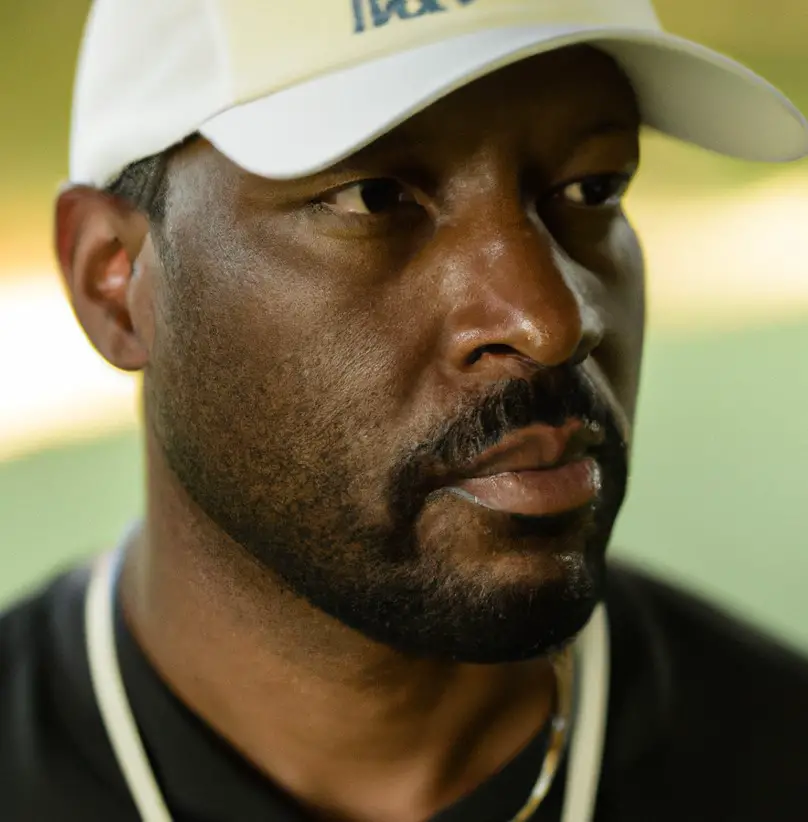
Marquel Williams is a highly regarded flag football coach with over a decade of experience in the sport. He is dedicated to developing young flag football players and helping them reach their full potential. Throughout his coaching career, Marquel has won hundreds of games, showcasing his expertise in player training, game planning, and motivating his teams.



